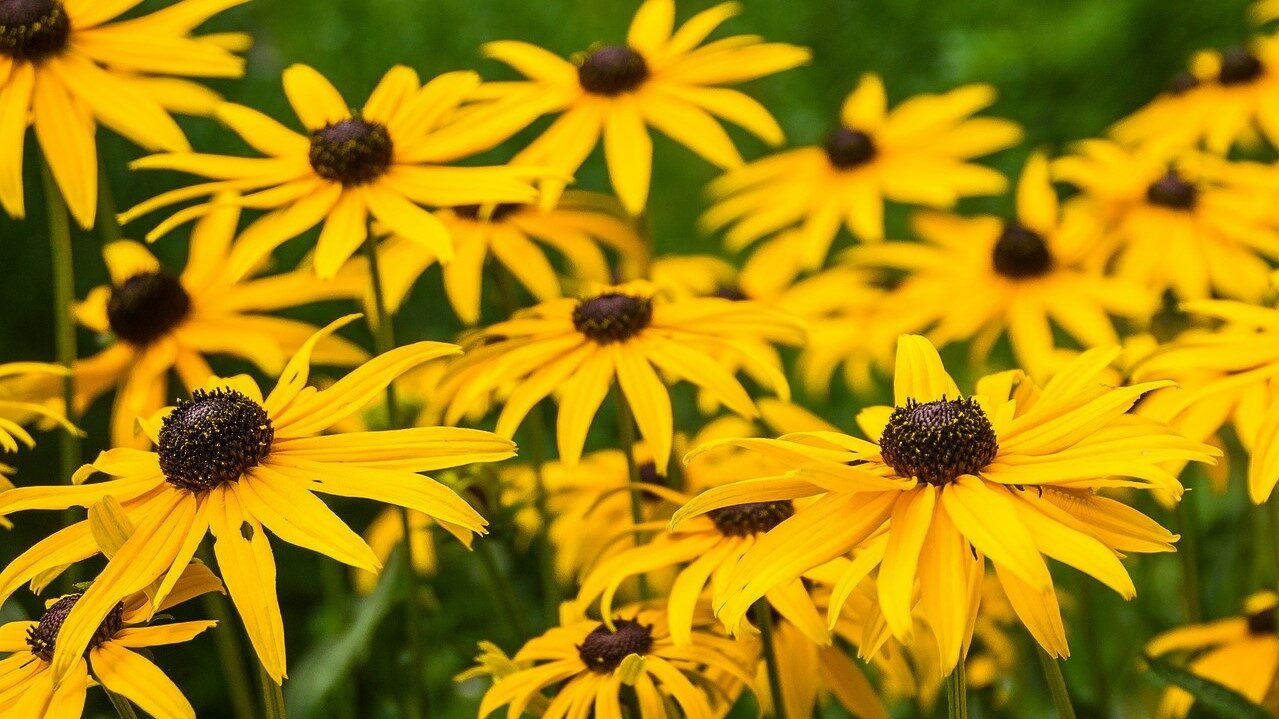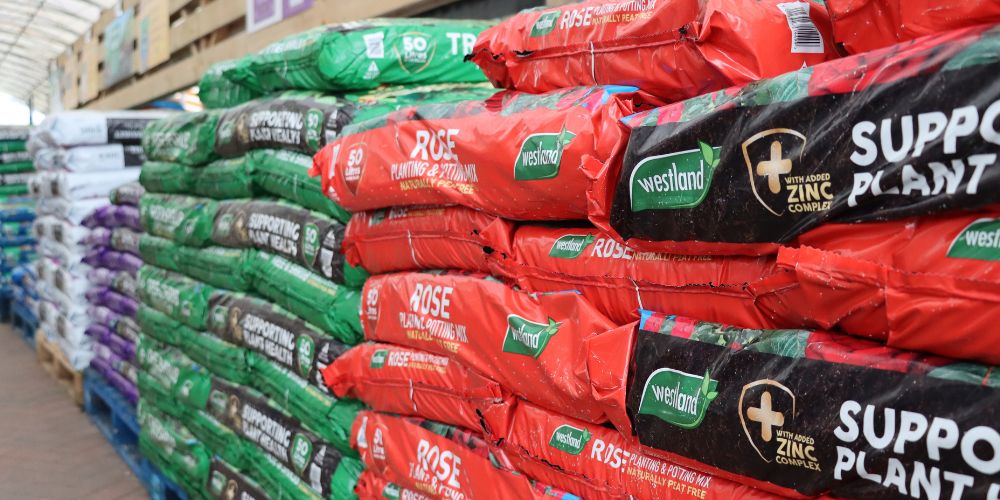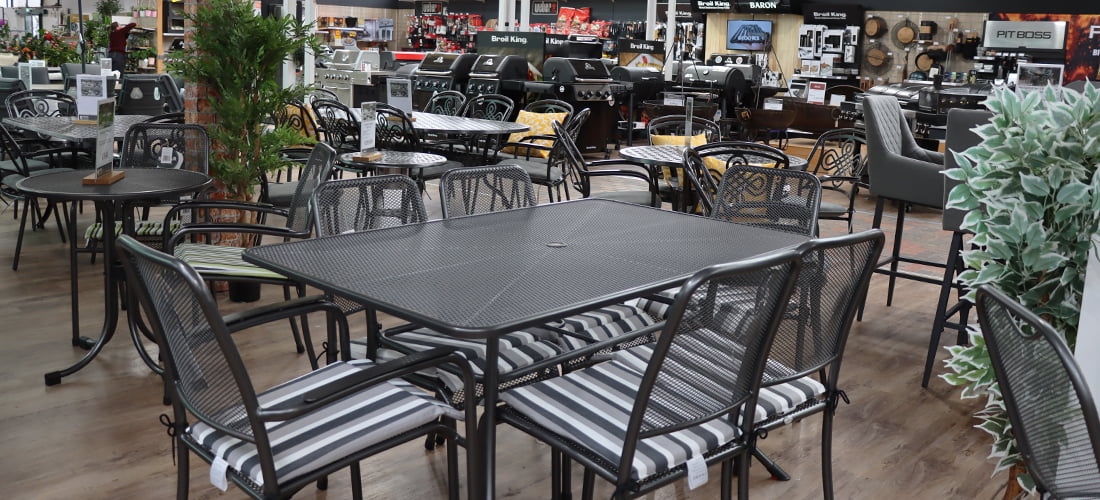Clay soils are cursed by those who have them: either wet or sticky or then, overnight, becoming cracked and dry.
They can be alkaline or acid. Use a soil tester to ascertain which they are inclined to be. If they are a little acid, you may be able to plant some acid lovers if you incorporate some ericaceous compost. Avoid thin chalk lovers, though, even if your soil is fairly alkaline.
The plants detailed in this leaflet will grow in other conditions but are true tolerators of heavy clay soils. There are enough of them to make even the largest heavy clay garden attractive in all seasons.
Many of the plants mentioned below can be viewed on our Plant Finder.
HOW TO IMPROVE HEAVY CLAY SOILS
Try and improve your soil by digging in liberal amounts of compost and manure or a proprietary product such as ‘Claybreaker’.
Do not use peat as it actually increases waterlogging. Avoid digging too deep as it only brings even stickier and colder yellow subsoil to the surface. If possible, try and improve the drainage system.
PERENNIALS FOR TOLERATING HEAVY CLAY SOILS
- Aconitum (Monkshood): Poisonous ‘hooded’ flowers.
- Ajuga Reptans (Bugle): Ground cover. Attractive leaves for all year round interest.
- Anemone japonica (Japanese Anemone): Tall hybrids with white or pink flowers. A. nemorosa: Ground hugging woodland natives.
- Aster novi-beigii (Michaelmas Daisy): Late summer/ autumn flowering daisies.
- Camassia (Quamash): White, purple and blue bulbs.
- Crocosmia (Montbretia): Yellow, orange to red tubular flowers with green strap-like leaves.
- Digitalis (Foxglove): Tall one sided spiked flowers for shady positions.
- Doronicum (Leopards Bane): Early yellow daisies.
- Dryopteris (Buckler Fern): Attractive fronds.
- Helenium autumnale: Late flowering bronze or yellow daisy-like flowers for long lasting blooms.
- Hemerocallis (Day Lily): Trumpet shaped flowers.
- Inula: Gold/yellow daisy-like flowers.
- Lamium maculatum (Deadnettle): Silver or gold striped leaves and purple, pink or white flowers. Good ground cover.
- Leucojum (Snowflake): Like giant snowdrops.
- Lysamachia clethroides: White star shaped flowers.
- Lythrum virgatum (Loosestrife): Slender spikes.
- Monarda (Bergamot): Showy tubular flowers with prominent hood to attract bees & butterflies.
- Myosotis (Forget-me-Nots): Familiar blue, pink or white flowers.
- Polemonium caeruleum (Jacob’s Ladder): Slender pointed leaves with bowl shaped flowers.
- Polygonum amplexicaule (Knotweed): Creeping plant with white, red or pink spiky flowers.
- Rudbeckia (Coneflower): Often known as ‘Black Eyed Susan’ with daisy like flowers & central cones.
- Solidago (Golden Rod): Yellow plumose heads.
- Tellima grandiflora: Hairy maple-like leaves which have good autumn colouring and last all winter.
SHRUBS FOR TOLERATING HEAVY CLAY SOILS
- Abelia: Graceful shrub festooned with summer flowers.
- Aesculis parvifolia: Shrubby Horse Chestnut.
- Aucuba (Laurel): Plain green shiny, spotted or variegated leaves loved by arrangers. Ideal for deep shade.
- Berberis: Large family of prickly shrubs with red deciduous or green evergreen leaves & orange flowers.
- Chaenomeles (Cydonia/Flowering Quince): Free standing or wall shrubs with waxy flowers & quinces.
- Choisya (Mexican Orange Blossom): Fragrant flowers. C. ternata & C. ternata ‘Aztec Pearl’ best for clay.
- Cornus (Dogwood): Bright winter coloured stems.
- Corylus (Hazelnut): Attractive leaves, yellow catkins. C. contorta has twisted stems and leaves.
- Cotoneaster: Evergreen and deciduous spreading shrubs with white summer flowers and autumn berries.
- Eucalyptus: Can be grown as attractive grey leaved shrub if regularly cut back each summer.
- Hedera (Ivy): Shrubby ivies tolerate any soils.
- Hypericum (St John Wort): Low growing spreader.
- Kerria: Green stemmed single or double yellow flowers.
- Osmanthus: Dark green leaved shrub with fragrant white tubular flowers in spring.
- Philadelphus (Mock Orange): Fragrant white flowering ‘Orange blossom’ tall or low growing shrubs.
- Potentilla: Long flowering shrubs with yellow, cream, white, orange or red flowers like miniature single roses.
- Prunus laurocerasus (Common Laurel): Tough-leaved vigorous growing shrub ideal for hedging and shade.
- Rhamnus frangula (Alder Buckthorn): Narrow growing shrub with small ovate leaves turning yellow in autumn.
- Rhododendron: Hybrid varieties tolerate acidic clay soils if humus material is added.
- Ribes (Flowering Currant): Familiar spring flowerers.
- Rosa (Rose): Will tolerate heavy soils if well manured.
- Rubus (Ornamental Blackberry): ‘Brambles’ with decorative whitewashed stems ideal for ground cover.
- Salix: Shrubby ‘Willows’ many with spring catkins.
- Skimmia: Evergreen rounded low growing shrubs which need male and female to produce berries.
- Spiraea: Wide range of spring & summer flowering shrubs.
- Symphoricarpus (Snowberry): White or pink berries.
- Syringa (Lilac): Large family with perfumed flowers.
- Viburnum: Varied forms with white or pink flowers.
- Vinca (Periwinkle): Spreading or trailing shiny-leaved long flowering ground coverer.
- Weigela: Profuse red, pink or white flowers.
TREES FOR TOLERATING HEAVY CLAY SOILS
- Acer platanoides (Norway Maple): Tall, domed, roundheaded trees with five-lobed leaves like maples. Popular forms include ‘Crimson King’ and ‘Royal Red’.
- Acer pseudoplatanus (Common Sycamore): Wide spreading, densely and hugely domed trees. Popular varieties include ‘Brilliantissium’ and ‘Leopoldii’.
- Alnus (Alder): All forms like heavy soils. Splendid crowns hung with catkins in the spring.
- Betula (Birch): Upright or weeping birches, many with dazzling white stems. Wide spreading surface roots.
- Carpinus (Hazelnut): Stately trees, quite columnar with varying coloured leaves, according to variety, with spring catkins.
- Crataegus (Hawthorn or May): Tough hardy tree ideal in coastal and exposed positions. Red, pink or white ‘May’ blossom and some autumn berries.
- Eucalyptus: Very tall, fast growing trees with attractive juvenile leaves ideal for light screen.
- Fraxinus (Ash): Wind resistant large trees with pinnate leaves ideal in sun or part shade.
- Laburnum (Golden Chain/Golden Rain Tree): Familiar trees with drooping bright yellow flowers. L. vossii has longer racemes and L. pendulum is a very choice weeping form. Beware poisonous seed pods.
- Malus (Ornamental Crab): Double value trees with white, pink or dark red flowers and self-fertile yellow or red fruits in autumn. Ideal for small garden.
- Platanus (Plane): Fast growing tall trees with maple-like leaves, ideal for compacted soils and streets.
- Populus (Poplar): Strongly ascending branched trees ideal for screening and windbreaks, especially good for which is P. nigra. Tolerates sea breezes.
- Prunus (Flowering Almonds, Cherries, Peaches and Plums): Beautiful spring blossom often with colourful autumn leaves. P. subhirtella ‘Autumnalis Rosea’ flowers through the winter.
- Pyrus (Ornamental Pear): Small to medium size trees with white spring blossom and silvery leaves.
- Quercus ilex (Evergreen or Holm Oak): Stately evergreen forming a densely leaved canopy so ideal for coastal situations.
- Salix (Willow): Hardy, quick and easy to grow wide range of trees. Weeping Willow has invasive roots so avoid planting near buildings and drains.
- Sorbus aria (Whitebeam), S. aucuparia (Mountain Ash), S. intermedia (Swedish Whitebeam): Varying forms and sizes with early frothy creamy-white spring flowers and whitey pink, orange or red berries.
CONIFERS FOR TOLERATING HEAVY CLAY SOILS
- Abies (Silver Fir): Wide range of conifers which usually have a symmetrical outline, pyramidal or conical shape. Attractive all year.
- Picea (Spruce): Pyramid shaped conifers that tolerate wet, cold soils. Particular forms include P. abies (Norwegian Spruce/ Christmas Tree), eventually make an imposing tree. P. pungens forms have silvery blue foliage.
- Taxus (Yew): Dark green or golden forms often ideal for hedging. The occasional berries are poisonous.
- Thuya plicata ‘Atrovirens’: Large fast growing tree of upright conical habit. Will tolerate wide range of soils and makes splendid hedge or screen.
CLIMBERS FOR TOLERATING HEAVY CLAY SOIL
- Hedera (Ivy): Self clinging hardy evergreen climbers for sound brick and stone walls. Suitable for any aspect including north and east.
- Pyracantha (Firethorn): Tall growing wall shrubs with white summer flowers and yellow, orange or red winter berries. Any aspect.
We try hard to stock as many of these plants as possible but cannot guarantee availability. If a plant you are interested in is not mentioned in this guide, it may be suitable for your garden if positioned carefully.
Please ask a member of our friendly and knowledgeable plant teams for advice.








